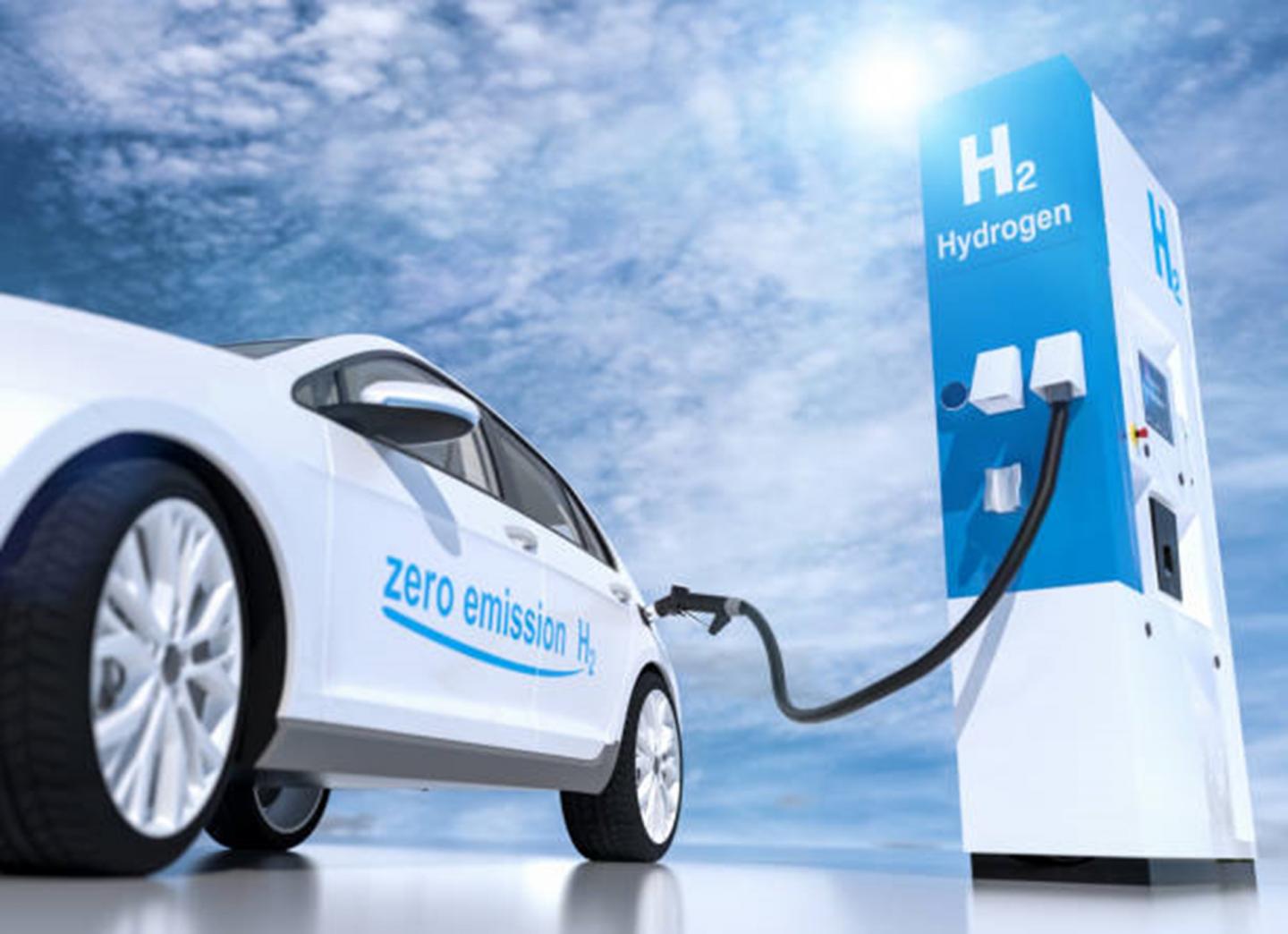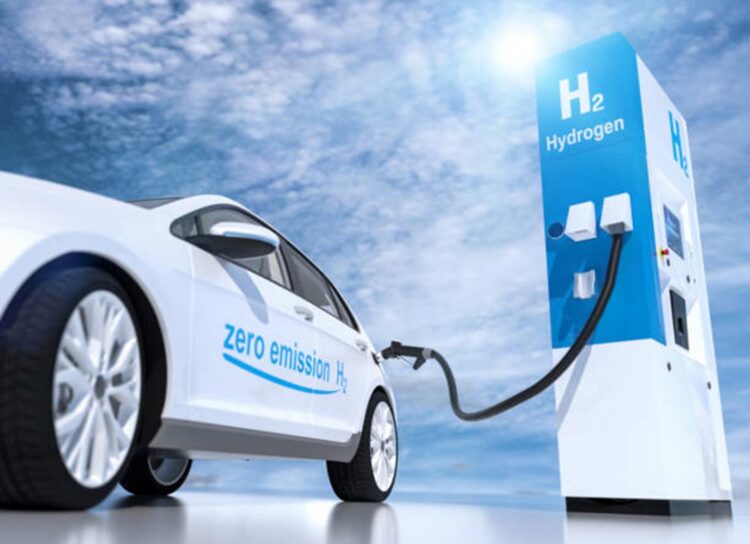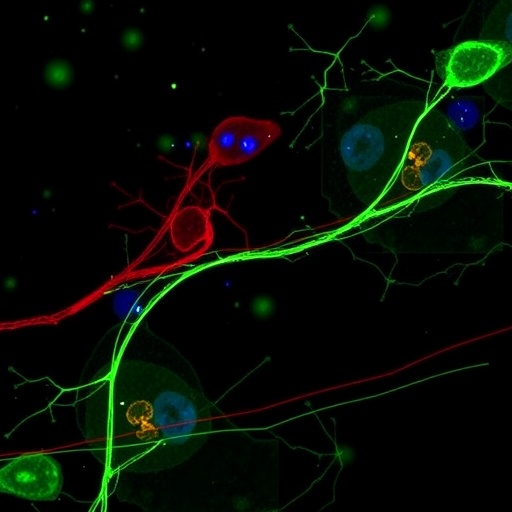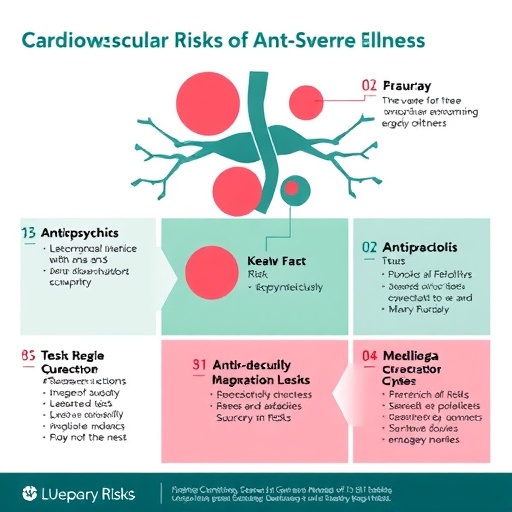Scientists combine materials with contrasting properties using a unique method to design a robust and high-performance fuel cell membrane for hydrogen production

Credit: Incheon National University
A considerable portion of the efforts to realize a sustainable world has gone into developing hydrogen fuel cells so that a hydrogen economy can be achieved. Fuel cells have distinctive advantages: high energy-conversion efficiencies (up to 70%) and a clean by-product, water. In the past decade, anion exchange membrane fuel cells (AEMFC), which convert chemical energy to electrical energy via the transport of negatively charged ions (anions) through a membrane, have received attention due to their low-cost and relative environment friendliness compared to other types of fuel cells. But while inexpensive, AEMFCs suffer from several major drawbacks such as low ion conductivity, low chemical stability of the membrane, and an overall lower performance rate than its counterparts. Now, in a study published in the Journal of Materials Chemistry A, scientists from Korea report a novel membrane that is both thin and strong, and takes care of these drawbacks.
To develop their membrane, the scientists used a novel method: they chemically bonded two commercially available polymers, poly(2,6-dimethyl-1,4-phenylene oxide) (PPO) and poly(styrene-b-(ethylene-co-butylene)-b-styrene) (SEBS) without using a crosslinking agent. Professor Tae-Hyun Kim from Incheon National University, who led the study, explains, “A previous study made a similar attempt to fabricate anion exchange membranes (AEMs) by crosslinking PPO and SEBS with diamine as a crosslinking agent. While the AEMs displayed excellent mechanical stability, the use of diamine could have led to different reactions other than those between PPO and SEBS, which made it difficult to control the properties of the resultant membrane. Therefore, in our study, we crosslinked PPO and SEBS without any crosslinking agent to ensure that only PPO and SEBS react with each other.” The strategy used by Prof. Kim’s team also involved adding a compound called triazole to PPO to increase the membrane’s ion conductivity.
Membranes fabricated using this method were up to 10 μm thin and had excellent mechanical strength, chemical stability, and conductivity at even a 95% room humidity. Together, these conferred a high overall performance to the membrane and to the corresponding fuel cell on which the scientists tested their membrane. When operated at 60°C, this fuel cell exhibited stable performance for 300 hours with a maximum power density surpassing those of existing commercial AEMs and matching cutting-edge ones.
Excited about the future prospects of this novel promising AEM, Prof. Kim says, “The polymer electrolyte membranes in our study can be applied not only to fuel cells that generate energy, but also to water electrolysis technology that produces hydrogen. Therefore, I believe this research will play a vital role in revitalizing the domestic hydrogen economy.”
Perhaps that clean and green world we envision is not far away!
###
Reference
Authors: Seounghwa Sung (1,2), Ji Eon Chae (3), Kyunghwan Min (1,2), Hyoung-Juhn Kim (3), Sang Yong Nam (4), and Tae-Hyun Kim (1,2)
Title of original paper: Preparation of crosslinker-free anion exchange membranes with excellent physicochemical and electrochemical properties based on crosslinked PPO-SEBS
Journal: Journal of Materials Chemistry A
DOI: 10.1039/d0ta10194j
Affiliations:
(1) Organic Material Synthesis Laboratory, Department of Chemistry, Incheon National University
(2) Research Institute of Basic Sciences, Incheon National University
(3) Centre for Hydrogen and Fuel Cell Research, Korea Institute of Science and Technology
(4) Department of Materials Engineering and Convergence Technology, Engineering Research Institute, Gyeongsang National University
About Incheon National University
Incheon National University (INU) is a comprehensive, student-focused university. It was founded in 1979 and given university status in 1988. One of the largest universities in South Korea, it houses nearly 14,000 students and 500 faculty members. In 2010, INU merged with Incheon City College to expand capacity and open more curricula. With its commitment to academic excellence and an unrelenting devotion to innovative research, INU offers its students real-world internship experiences. INU not only focuses on studying and learning but also strives to provide a supportive environment for students to follow their passion, grow, and, as their slogan says, be INspired.
Website: http://www.
About the author
Dr. Tae-Hyun Kim is a Chemistry Professor at Incheon National University (INU), Korea. He is also director of the Research Institute of Basic Sciences at INU. Dr. Kim received a Ph.D. in Chemistry from Cambridge University, UK, and conducted his post-doctoral research at MIT, USA. Before joining INU, he was a senior research associate at Eastman Chemical Co., USA. His research interests lie in the development of organic materials for various applications, including fuel cells, lithium batteries, water electrolysis, and gas separation. He has authored over 120 SCI journal articles and holds more than 50 patents.
Media Contact
Tae-Hyun Kim
[email protected]
Original Source
http://www.
Related Journal Article
http://dx.





